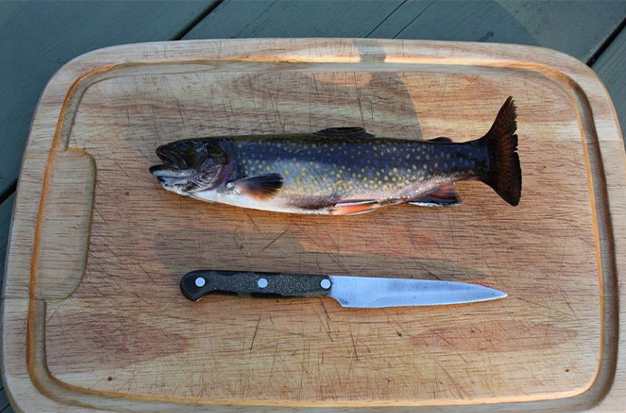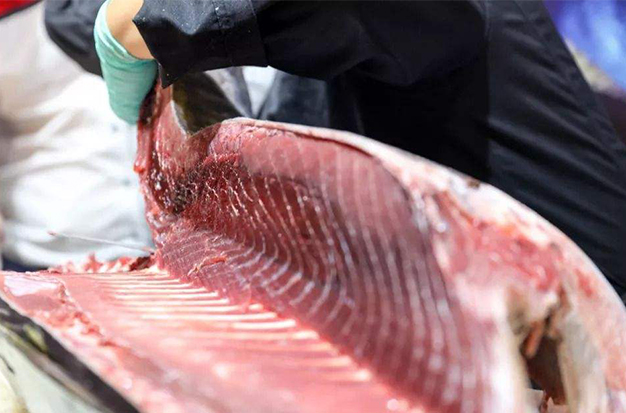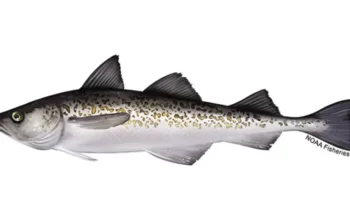Cleaning a fish is quick and easy, and eating fish you caught yourself can be even more satisfying. Answers to some of the most frequently asked questions about cleaning a fresh fish have been compiled for this article. You’ll be preparing a delicious meal in no time if you use these tips!
Table of Contents
Preparing To Clean A Fish
The meat will be better if the fish is fresher, which is the first lesson. Fish that has been cooked may be frozen, but as the meat dries and hardens, the flavor starts to deteriorate. Additionally, the smell of fish meat may permeate your freezer. That scent is challenging to remove.
Try to use a park cleaning station because cleaning a fish is an unpleasant task. If not, try to locate a table outside. Put down a thick layer (or two) or three of newspaper under your prep area. For the purpose of rinsing the fish before cleaning, make sure you have access to a tap. And throughout the process, you should have clean, rinsed hands.
Step 1: Try your best to rinse the fish’s greasy coating off.
Step 2: Utilizing paper towels, pat dry the fish after rinsing it. Avoid using lubricant when handling a body that you’re cutting with a sharp knife.
How To Clean A Fish: Steps
You must learn how to gut a fish if you intend to cook your fish whole or if you want to serve it as steak rather than fillet it.
- Place the fish on a table or cutting board to start. Near the anal opening, insert the knife tip into the fish’s belly. Raise the blade along the stomach, cutting to the head.
- So as not to pierce the intestines, keep the knife blade shallow.
- Spread the body open, take out all the internal organs, then find the fish’s anus and cut it out in the shape of a “V” or notch.
- On the backbone of some fish is a kidney. Remove it by using a spoon or your thumbnail to scrape it out.
- Wash the skin after thoroughly rinsing the cavity with water. To avoid a strong, oily flavor, some fish have a dark tissue lining the abdominal cavity that can be scraped off.
- If you prefer, remove the head from the trout; however, it is frequently prepared that way.
- As soon as you finish cleaning your fish, gather the heads, scales, and guts and dispose of them properly.
- Your cleaned fish is now prepared for cooking.
How To Scale A Fish?
Scales can be loosened by running the fish under cold, fresh water. When you’ve finished patting the fish down, place it on top of several sheets of newspaper to make cleanup easier.
Step 1: Take a firm hold of the tail and, using a descaling tool or the butter knife’s blunt edge, run your tool from tail to head, scraping the scales off. The torso ought to start feeling smooth after a few runs.
Step 2: To remove any lingering residue and scales, rinse the descaled fish side under running water.
Step 3: Using caution and keeping an eye out for sharp fins, carefully run a finger against the fish’s natural grain to feel for any missed areas.
Step 4: Continue by flipping the fish over.
How To Gut A Fish?
Step 1: The scales that have been scraped should be wrapped and thrown away. Set the cutting board on top of another layer of newspaper, your fish lying on its side. d to cook.
Step 2: Cut to the head by advancing the blade up along the middle of the fish, starting at the anal opening. Blade depth should be kept to a minimum. The meat will be ruined by intestine punctures.
Step 3: Pull the entrails out of the body by spreading it open. Locate the fish’s anus and cut a “V” or notch in it. Don’t forget to remove the kidney as well. If the fish has a kidney, it will be located higher up, close to the backbone. Use a spoon to scrape it out.
Step 4: When you’re left with white or pink meat, hose or water down the now-cleared cavity. Be wary of any dark tissue that lines the abdominal cavity. To prevent the meat from absorbing an overwhelming amount of oil, scrub this off. You can decide whether or not to remove the head from the back of the gills. The head is left on when cooking a lot of game fish, particularly trout. The fish’s tenderest meat is located behind its gills, if you can get to it.
Step 5: Clean your work area and adhere to proper health protocols. Gather and wrap the guts, heads, and scales in newspaper before throwing them in the trash.
Now for the exciting part: your clean fish is ready to be dressed

How To Fillet A Fish?
Once the fish has been thoroughly cleaned, cut it into portions that can be eaten. One of the more adaptable ways to prepare fresh fish is with fish fillets.
Step 1: Put the fish in front of you with the dorsal fin facing out. To cut behind the gills and pectoral fin, grab a flexible, sharp fillet knife.
Step 2: Don’t sever the spine; instead, cut it all the way down. Cut along and down the spine once the knife reaches the backbone by flattening it out. The result should be a flap that covers the fish’s entire body, from head to tail.
Step 3: To get the most meat out of the fillet, lift the flap with your non-dominant hand and continue cutting the fillet along the body of the fish. Be cautious, but don’t freak out if you cut into the ribcage—rib bones can always be removed later.
Step 4: Placing the fillets skin-first after the cut has been fully closed. You may leave the fish skin on if you like; it makes a tasty snack or addition to your meal. But if you’re really motivated, you can just saw through the skin and the meat to separate the fillet from the skin.
Step 5: Rinse under cold water, dry with a paper towel, flip, and repeat.
How To Steak A Fish?
Mahi-mahi, salmon, and other large game fish should be prepared with more meat. By steaking your fish, you can avoid the time-consuming process of filleting while also enjoying portions that are more meaty.
Step 1: Make a series of cuts perpendicular to the spine on your fish after it has been scaled and gutted.
Step 2: Chop steaks that are between half and an inch thick, working your way from head to tail.
Step 3: From each cut, remove the skin and backbone but leave the bones and fat behind.
Step 4: Cut your catch into steaks, cook them on the grill, and savor.
How To Clean A Fish: Tips And Warnings
Find out if the fish in the area where you’re fishing are safe to eat; some bodies of water are contaminated with heavy metals like mercury that fish can absorb. Prior to heading out to fish, always double-check your state’s regulations.
You can now store or cook your fish after cleaning it or after preparing your steaks or fillets. Check out some of our preferred cooking techniques and dishes.
- When learning to gut a fish, fillet a fish, or clean a fish whole, exercise extreme caution because fish fins can be extremely sharp and result in life-threatening puncture wounds.
- Some fish are either too bony or have a strong flavor to be eaten.
- When holding a fish by the head to clean it, take care because some fish have very sharp teeth.




